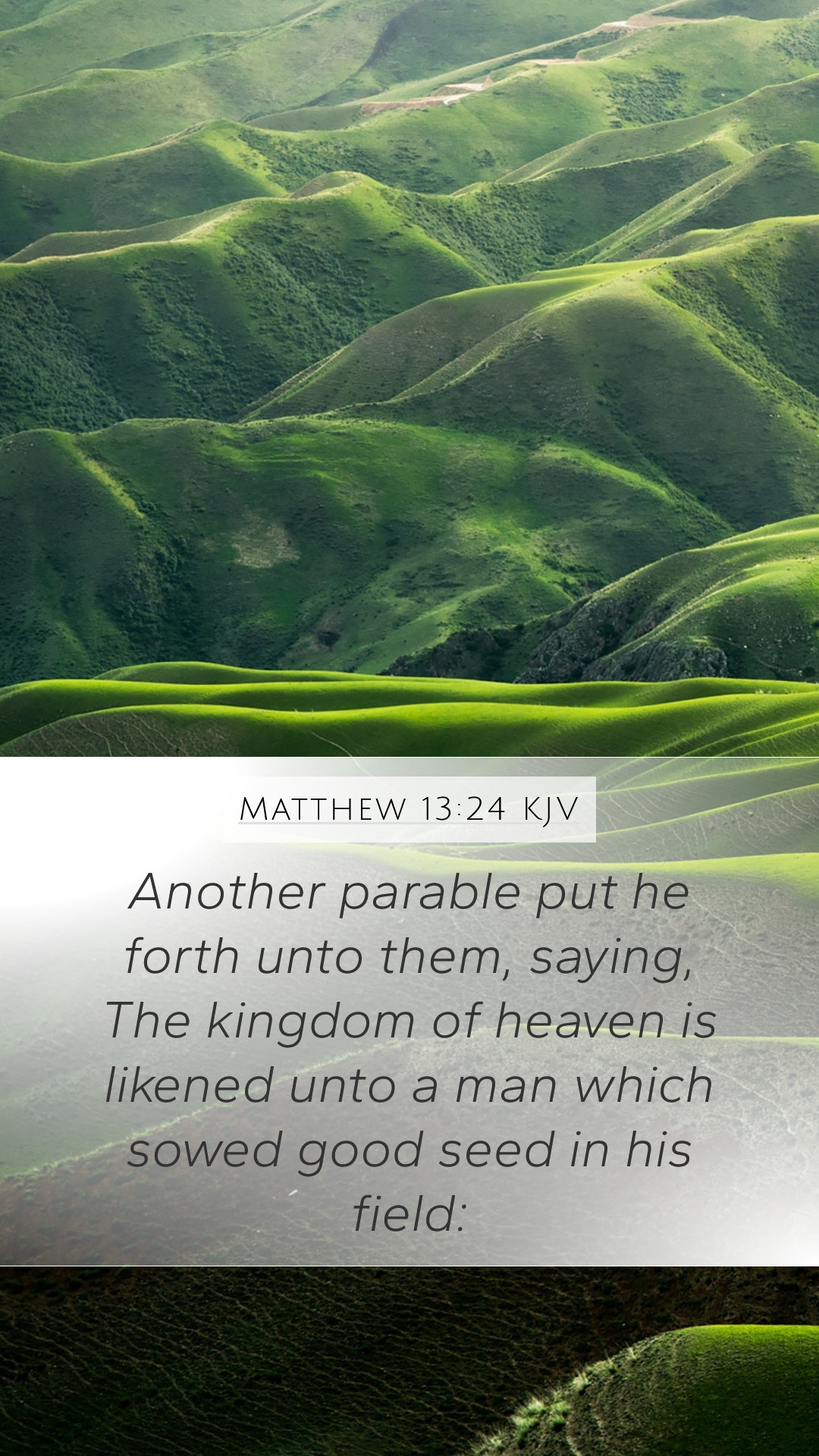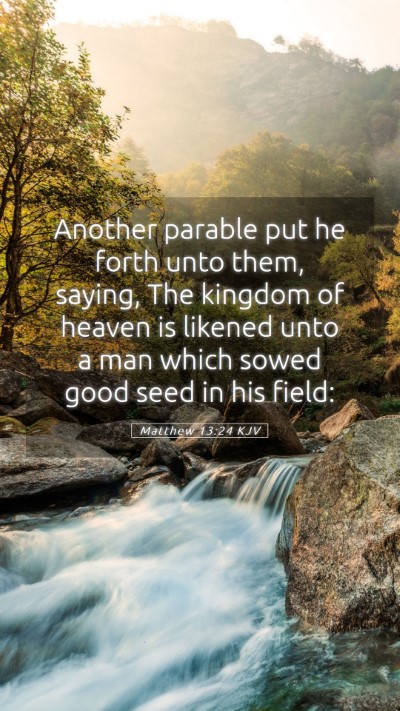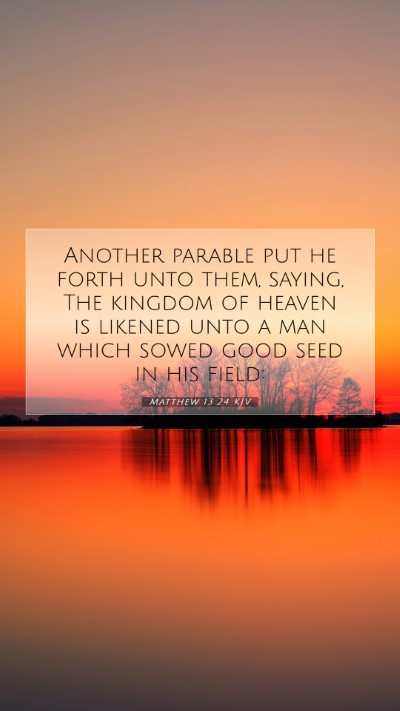Bible Verse Meaning and Commentary for Matthew 13:24
Verse: "Another parable put he forth unto them, saying, The kingdom of heaven is likened unto a man which sowed good seed in his field."
Overview
The parable of the wheat and the tares, as presented in Matthew 13:24, introduces a critical insight into the nature of the Kingdom of Heaven. Each commentary provides its perspective on the deeper lessons behind this metaphorical illustration.
Matthew Henry's Commentary
Meaning: Matthew Henry emphasizes the idea of sowing good seeds, that is, the gospel of the Kingdom. The man who sows the seed symbolizes Christ himself or the ministers of the gospel who spread the truth. This act reflects God's intention to establish a community of believers who embody His teachings.
Key Insights:
- The significance of good seeds highlights the fundamental principle of spreading truth and righteousness.
- The field represents the world or the church where believers dwell, facing both good and evil.
- Henry suggests that God's mercy allows time for growth amidst corruption, revealing his patience and grace.
Albert Barnes' Commentary
Meaning: Barnes provides an in-depth look into the comparative nature of this parable. He notes that in this scenario, the good seed refers to the children of the kingdom, while the field is the realm where these children live and grow in faith.
Key Insights:
- The presence of tares (weeds) alongside wheat represents the coexistence of believers and non-believers in the world, which can lead to challenges for the faithful.
- The parable underscores the notion that judgment and separation will occur at the end of the age, highlighting the ultimate justice of God.
- The potential hardships faced by the faithful are acknowledged, stressing the importance of maintaining faith amidst adversity.
Adam Clarke's Commentary
Meaning: Adam Clarke's interpretation places weight on the agricultural metaphor used in the verse. He articulates that the “man” represents Christ while the act of sowing seeds illustrates the spread of the gospel.
Key Insights:
- Clarke points out that the good seeds symbolize true believers who are sown into the fabric of society, emphasizing the divine mission of evangelism.
- The mention of an enemy sowing tares implies the ongoing spiritual warfare and the reality of deception present in the world.
- This teaching eventually leads to a separation between righteous and unrighteous at the culmination of time, reinforcing an eschatological theme.
Application and Reflection
This verse invites believers to contemplate their role within the Kingdom of Heaven. Consider these points:
- How does the metaphor of the wheat and tares affect your understanding of your community?
- In what ways can you contribute positively as the good seed in a world filled with challenges?
- Reflect on God’s patience and mercy while waiting for the right time for final judgment.
Cross References
This verse is related to:
- Matthew 13:30 - “Let both grow together until the harvest.”
- Galatians 6:7 - “For whatsoever a man soweth, that shall he also reap.”
- Revelation 14:15 - “Thrust in thy sickle, and reap; for the time is come for thee to reap.”
Conclusion
In summary, Matthew 13:24 serves as a profound reminder of the kingdom's duality: the existence of good and evil among believers. Understanding this verse sheds light on the complexities of life in faith and the assurance of God’s ultimate judgment. Whether participating in bible study groups or engaging in online bible study, these insights serve as vital tools for bible study insights and understanding scripture deeply.


